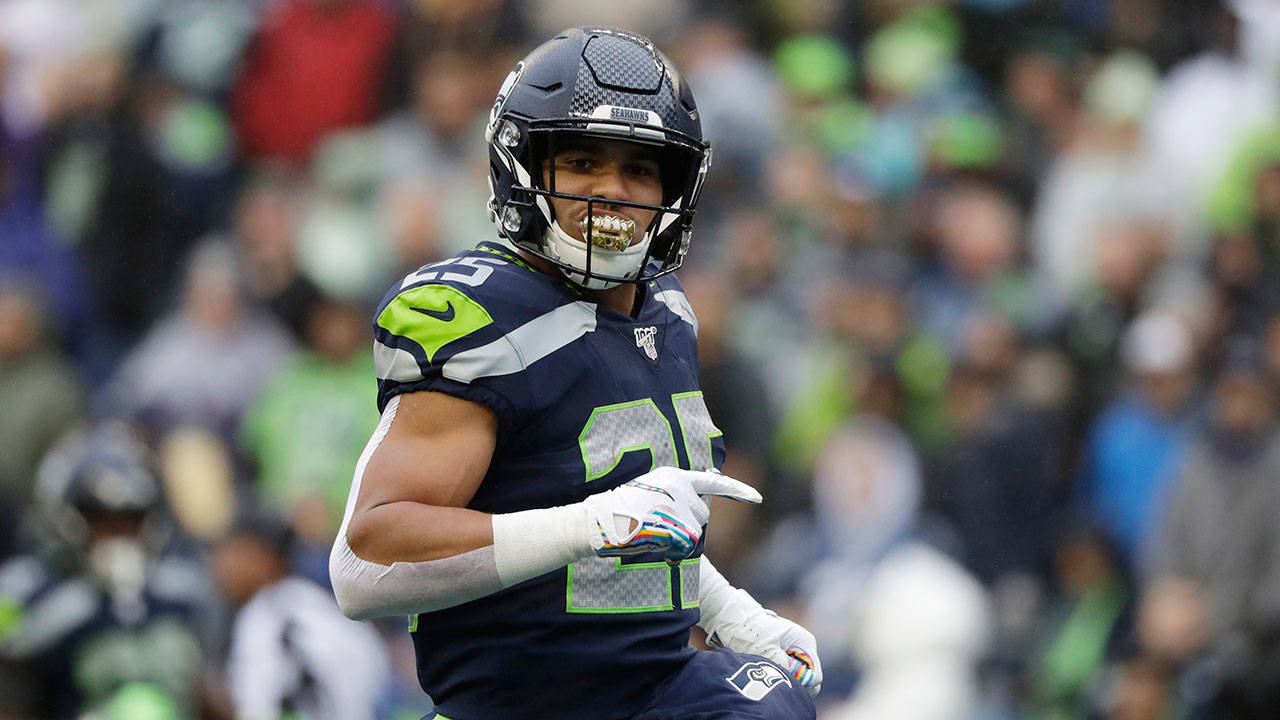By Ryan Divish / The Seattle Times
SEATTLE — When Travis Homer envisioned the first carry of his NFL career, the Seattle Seahawks rookie running back assumed it would come in a normal fashion. Perhaps it would be on a straight dive up the middle where he could lower his shoulder on a would-be tackler, or maybe a toss to the outside where he could use his speed to get around the edge for a big gain.
Homer’s first NFL rush, which netted 29 yards, came as the protector in punt formation.
“You know I never really thought it was going to be like that,” he said. “But I’m just happy to get any opportunity.”
Though it didn’t lead directly to a score in Seattle’s 37-30 win over the Minnesota Vikings on Monday night, it was a big fourth-quarter play that showcased the potential that Seahawks coaches and general manager John Schneider have mentioned often since selecting Homer in the sixth round of the 2019 NFL draft out of Miami.
Having just given up a 58-yard touchdown pass that cut their lead to 34-24, the Seahawks were looking at a possible three-and-out on the ensuing possession, which would have been suboptimal with 11 minutes remaining in the fourth quarter.
So, coach Pete Carroll decided to run the fake punt they’d practiced all week on fourth-and-3 from their own 32-yard line.
“I’m not going to tell you that,” Carroll said of what went into the decision to call the fake punt. “But, I sure liked the way it was executed. The guys did it beautifully, and the timing was exactly right. Great job by Brian Schneider and Larry Izzo to come up with the idea and the thought of it for the guys to execute. That’s a lot of people involved in getting that done and a lot of communication on that. That’s all you get.”
Lined up eight yards in front and just to the right of punter Michael Dickson, Homer took a perfect short snap from long snapper Tyler Ott and sprinted to his right where Lano Hill, with a little help from Jacob Hollister, had sealed off the outside defender. Homer raced past the unsuspecting defense with Hollister running by his side. He picked up big downfield block from Marquise Blair to pick up extra yardage.
“We were preparing for it all week,” Homer said. “We looked at their punt return team and what it was doing and saw an opportunity. And we were just waiting to use it in the game.”
How often did they practice it?
“We did two or three times a practice at least,” Homer said. “We’d run it two or three times in a row, then run a punt and then run we’d run it two or three times again.”
And it worked to perfection.
“We were ready to run it the whole time,” Homer said. “We just needed the right opportunity. Everyone did their job the way it was planned. It was even better than in practice. When we saw them shift over, I was like, ‘Oh, we got this.’”
Fellow running backs Chris Carson and Rashaad Penny were two of the first teammates to greet Homer as he got to the sideline.
“It was great,” Carson said. “Seeing him get that carry was good. He’s a real physical runner, and a lot of people don’t understand that. It was great to see him get that run.”
With Carson getting the bulk of the early carries and the recent emergence of Penny as a factor in the run game, Homer’s opportunities are likely to be limited to special teams. He’s been Seattle’s primary kick returner, and he recovered a fumble on kickoff coverage to end the game.
He understands patience is necessary.
“I’m sitting behind two great running backs, and I’m learning a lot from them,” Homer said. “I’m not going to sit here and complain. When they score, it’s like I’m scoring. I’m running on the field, celebrating with them and I’m happy for them. I really don’t have too much to complain about.”
Talk to us
> Give us your news tips.
> Send us a letter to the editor.
> More Herald contact information.

























